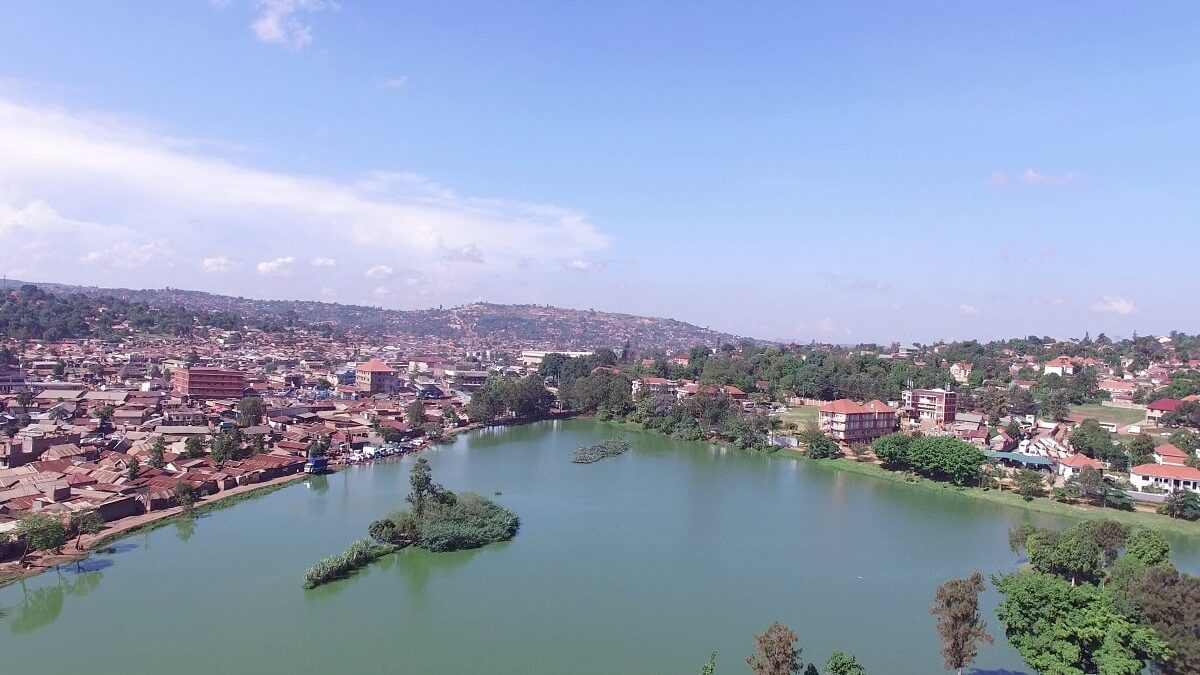Kabaka’s Lake: A Serene Oasis in Kampala, Uganda

Uganda Gorilla Habituation Experience
August 22, 2023
Jinja Source of the Nile
August 22, 2023Kabaka’s Lake Kampala Uganda: A Tale of Majesty and Serenity
Nestled within the heart of Kampala, Uganda, lies a testament to both historical significance and natural splendor—Kabaka’s Lake. This expansive water body stands as the largest man-made lake in the country, woven into the tapestry of Buganda Kingdom’s heritage. Constructed between 1885 and 1888, during the reign of Ssekabaka Mwanga II, this ambitious endeavor was birthed by the collective efforts of the 52 clans that constitute the Buganda Kingdom.
A Vision Woven into Waters: Ssekabaka Mwanga’s Dream
The visionary ruler, Ssekabaka Mwanga II, orchestrated the construction of Kabaka’s Lake with multifaceted intentions. His aspiration encompassed the creation of a navigable channel, broad enough to facilitate boat travel from the lake to the regal Lake Victoria. Envisioned as a means for leisurely pursuits such as swimming and fishing, this aquatic thoroughfare would also serve as a strategic escape route during potential conflicts with the British colonial forces.
An Unforeseen Pause: The Impact of Historical Turmoil
Despite the ambition and meticulous planning that fueled the construction, fate intervened in the form of the religious war that engulfed the Buganda Kingdom. On the 2nd of August, 1888, the ongoing construction of the channel was abruptly halted, its journey truncated before reaching its intended endpoint at Munyonyo. The tumultuous religious conflict cast its shadow, leaving an indelible mark on the historical trajectory of Kabaka’s Lake.
A Contemporary Oasis of Biodiversity and Serenity
Today, Kabaka’s Lake stretches across an expanse of approximately two square kilometers, its depth averaging around 200 feet. This aquatic gem thrives as a haven for a diverse array of water bird species, solidifying its status as a vital conservation site. Amid the echoes of history and the tranquil embrace of nature, Kabaka’s Lake beckons visitors to bask in its serene beauty.
Reshaping Perspectives: Mwanga II’s Legacy Beyond Controversy
King Danieri Basammula-Ekkere Mwanga II, Mukasa, a figure historically characterized by controversy, is also the architect of Kabaka’s Lake. Beyond the shadows of his tumultuous reign, this peaceful water body stands as a testament to his legacy. Nestled near Rubaga, within the proximity of the royal Palace, Rubaga Miracle Centre, and St Lawrence University, Kabaka’s Lake endures as one of Africa’s longest-surviving man-made lakes.
A Royal Inspiration: The Birth of Kabaka’s Lake
The King’s affinity for fishing, swimming, and sports inspired a visionary idea—a water channel that would bridge his Lubiri Palace to Lake Victoria, with a midpoint at his Mengo Palace. The tale unfolds with Ssekabaka Mwanga’s stay at the missionaries’ quarters in Nalukolongo after his initial palace in Munyonyo met a fiery demise. The construction of the channel began, fueled by the King’s desire for quicker transport between Lubiri and Munyonyo. Springs in the area played their role in this aquatic creation.
A Royal Endeavor: The Sweat and Unity Behind the Lake
Ssekabaka Mwanga’s commitment to his vision led him to partake in the laborious process alongside his subjects, exemplifying unity and dedication. Amid challenges and resistance from some quarters, Mwanga’s active involvement echoed his determination to see the lake come to fruition. Tragedy and triumph intertwined during the 11 months of toil, with lives lost to fatigue, hunger, accidents, and diseases.
Unforeseen Interventions: The Lake’s Culmination and Halting
As the lake’s basin reached Najjanankumbi, a mere 2 kilometers from the Mengo Palace, a rebellion among Christian converts in 1888 abruptly concluded the lake’s construction. The basin contracted, shaping the lake’s present form, its legacy forever linked to this historical juncture.
A Destination of Tranquility and Reflection
Beyond its historical richness, Kabaka’s Lake captures hearts as a serene retreat. Amid its shimmering waters and lush environs, individuals find respite, drawing solace from the tranquil beauty that surrounds them. In this intersection of history, nature, and leisure, Kabaka’s Lake continues to beckon with its allure—a place to unwind and connect with the past while embracing the present.

